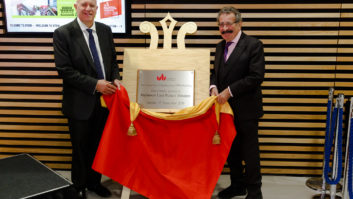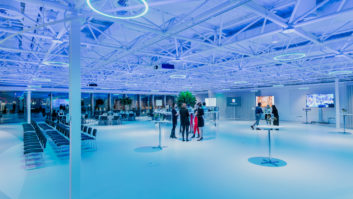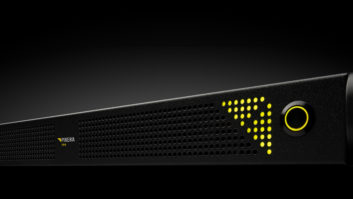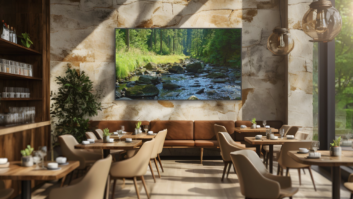
Listed and historic buildings can be a challenge when it comes to integrating technology. But, as whitwham’s Andrew Pymm points out, being clear about the end goals can add much-needed clarity.
Considering updating a listed or historic buildings AV system can appear to be a complex and daunting challenge. However, by working logically through the essential requirements and thinking about how the building and technology will work together, you can achieve a successful install.
You need to establish the critical requirements of the system: who is the audience, and how do you meet their expectations?; Who will be controlling the system and how do you make their operation duties easy?
At first glance, this may sound simple, but some venues need to operate on many levels and talk to varying audiences in different ways.
During a recent installation at Winchester Cathedral, we had to consider four main groups of people. From the audience side, there was the worship congregation and venue guests for concerts, ceremonies and presentations.
The user’s side of things was wider ranging. Cathedral staff include non-technical operators, through to production company engineers responsible for performances during external events. Both sets of audience groups had the same requirement, high-quality audio and video reproduction. However, the control diversity needed more thought to ensure system flexibility for all parties involved.
With the end goals identified, you can create an outline of the new systems requirements.
Many venues at this point enlist the support of a specialist consultant to help manage the technical aspects of the project. A consultant can help present the information in a way that is easier to understand by everyone involved in the project.
Discussions need to broaden to include the buildings architects, cultural and heritage advisors, along with client technical teams, such as IT, facilities and events staff. It is essential to ensure consideration of all aspects and to achieve compliance with special building consent. The process can be lengthy on some sites; some bodies only meet quarterly, so planning and understanding the process can help significantly reduce the project time.
With consent reached, you can engage with systems integrators, and start the next part of the process.
The first thing that the integrator will want to complete is a detailed site visit. The visit will allow first-hand experience of your working building, plus an understanding of the day-to-day challenges they could face during the project. During this process, they need to have full knowledge of any limitations set by the special consents and any other restriction that will affect their work. With this, they can provide a thoroughly thought through proposal for the installation of the new system.
Open minds
During the site visits, it is very likely that integrators and designers might notice and question things that the venue lives with as part of a working building. No two buildings are alike; having an open-minded approach and listening to good engineering insight could bring to the table a better project conclusion.
Most integrators will discuss various options and should highlight the potential expansion of the system so that the venue can react to its changing needs in the future. It is incredible how many times a new system installation after a few months use, alters operational perspectives and the way a building provides technical services.
The management of such projects is crucial to the smooth integration of the new systems, especially in larger buildings where there may be other renovation works in progress.
To complete the project in Winchester Cathedral, our project manager needed to work flexibly, fitting around daily services, hourly prayers, plus significant externally planned events and the daily throng of visiting tourists, as well as two other large-scale building renovation projects. Although this complicates the work and can extend the time required by parts of the project, it can significantly reduce the impact and help to preserve the fabric of the heritage sites involved.
Lastly, workflows and project timelines need to be realistic, flexible and be mindful or other elements that can slow down or potentially stop works. The use of temporary systems to cover any downtime can help, and you should try to avoid working to a deadline for a specific event.
Andrew Pymm is director at whitwam AV integration







